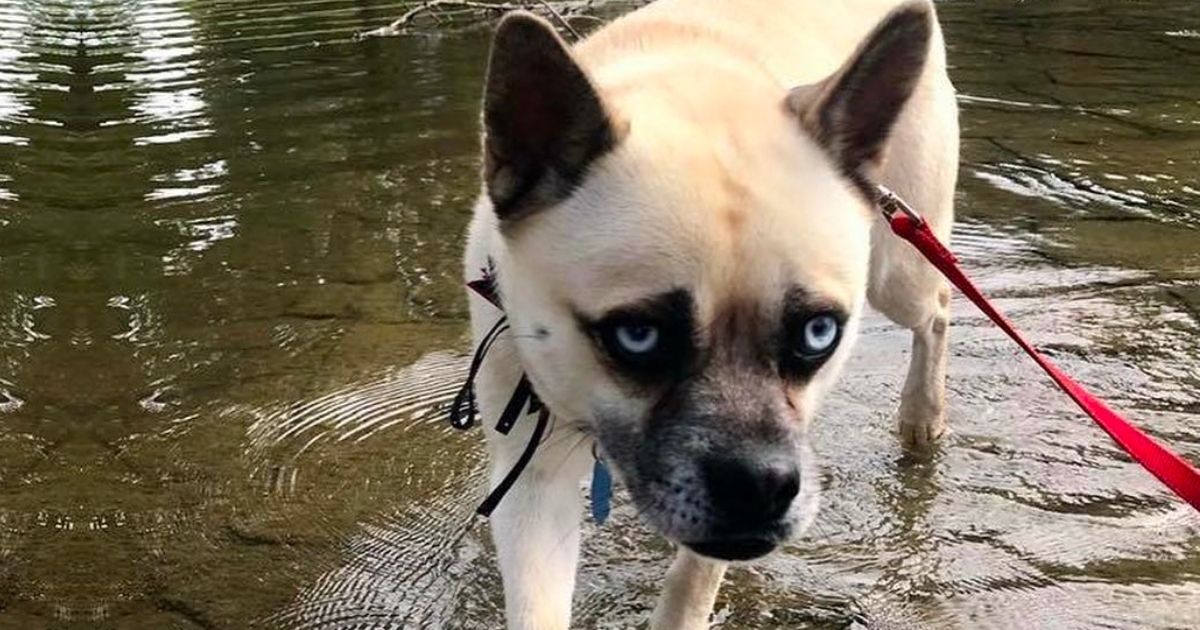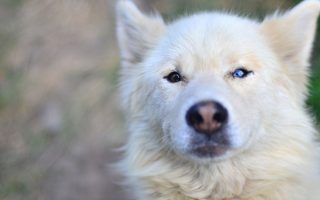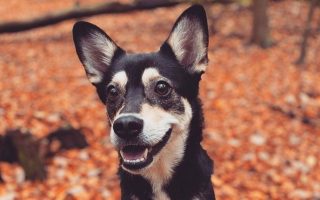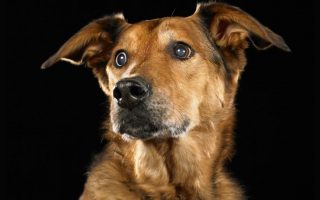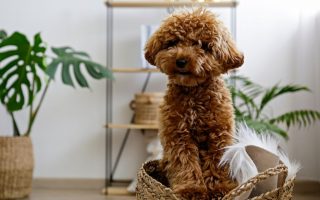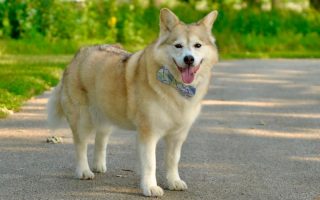Also known as Hug Dog or Pugsky, the Husky Pug Mix is a designer breed that crosses the worker Siberian Husky with the companion Pug.
Having parents of different sizes and attributes makes this breed an unpredictable one.
Its origin is also unclear, though it is believed to have existed for two decades.
Members of this breed are getting popular in the United States and loved within their families.
Their unusual looks, friendliness, and affection are attributes that endear them to many pet parents.
There isn’t enough information about this breed, and the best way to ascertain its looks and behavior is through its parents.
Both parent breeds are intelligent and friendly, so be ready to get a bundle of joy when you get a Hug Dog puppy.
More information on this breed will be available in this complete guide.
Hug Dog Breed Information
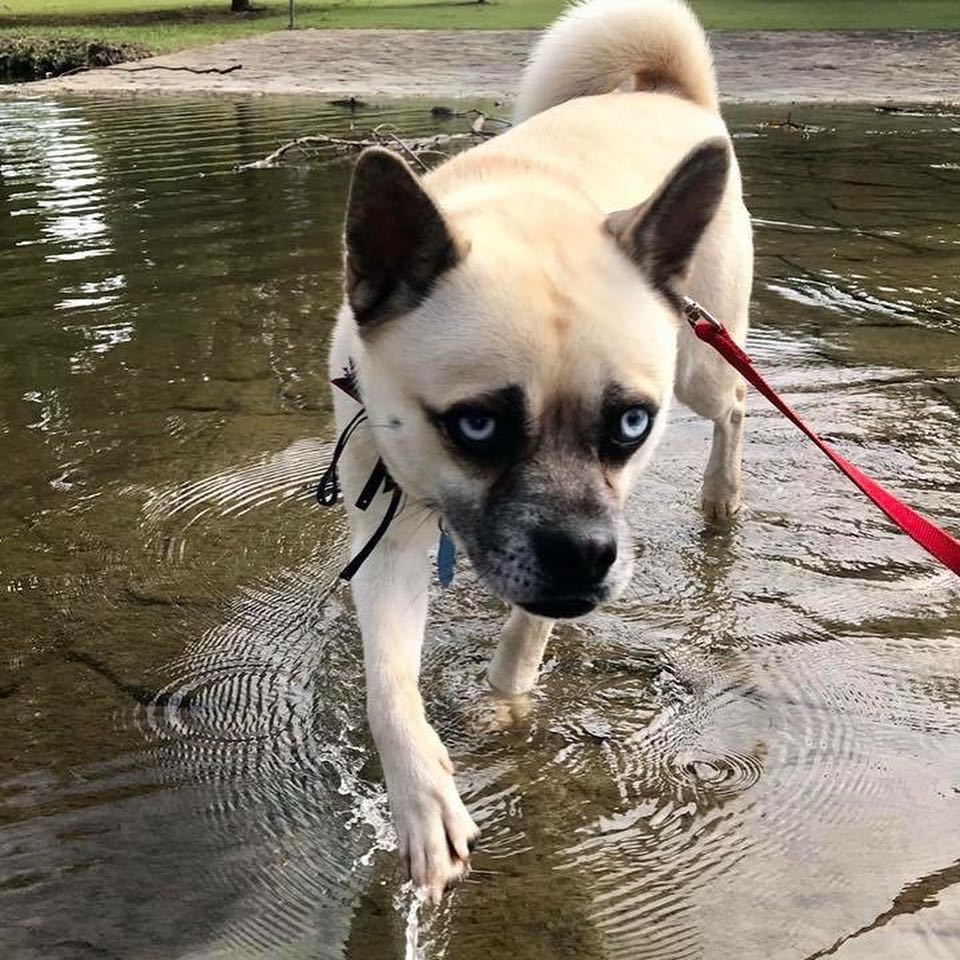
| Height | 10 to 23 inches |
| Weight | 30 to 60 pounds |
| Lifespan | 12 to 15 years |
| Coat | Long, short, straight, smooth |
| Colors | Black, gray, red, silver, white |
| Temperament | Friendly, loving, intelligent, alert, loyal, friendly |
| Ideal For | Houses with kids, homes with multiple pets |
| Puppy Price | $1200–$2000 |
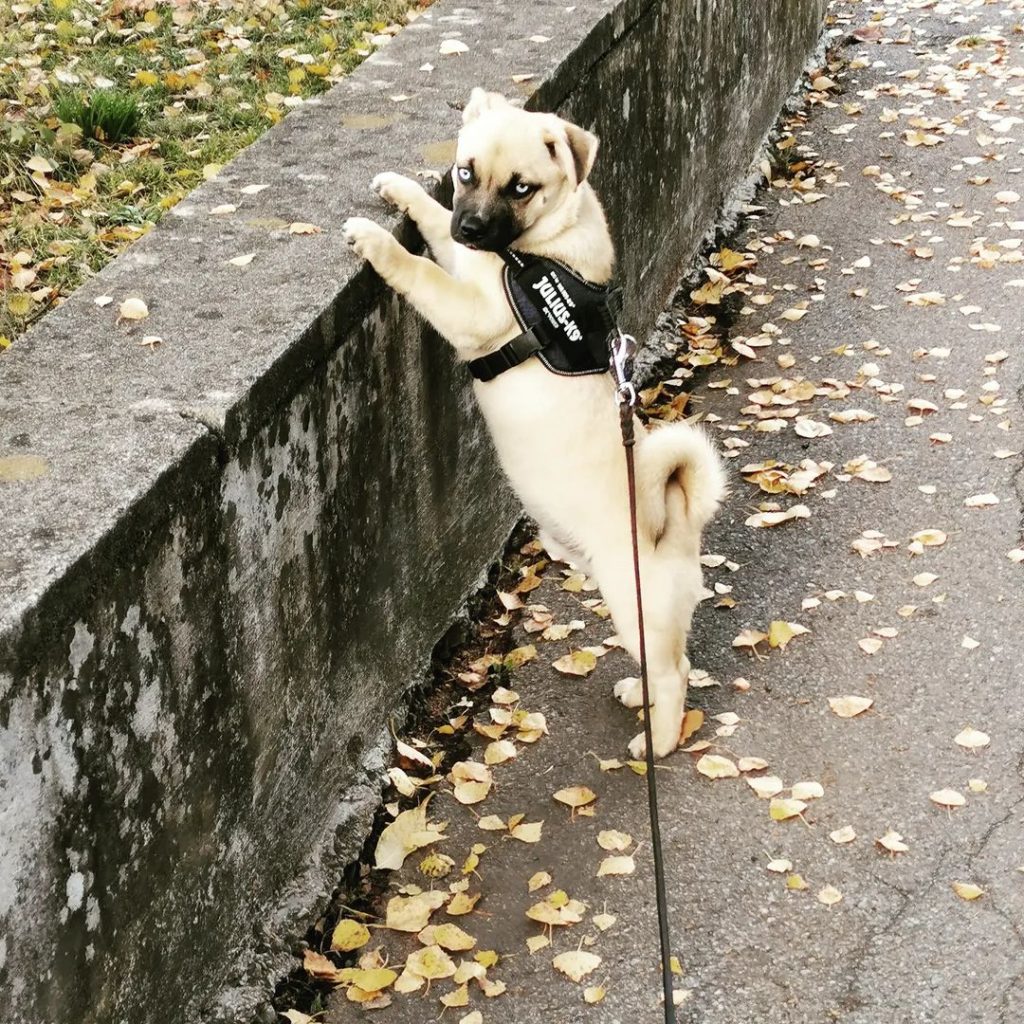
Husky Pug Mix Puppy Characteristics
| Health | High |
| Grooming | Medium |
| Friendliness | High |
| Energy | Medium to High |
| Trainability | Medium |
The Parent Breed
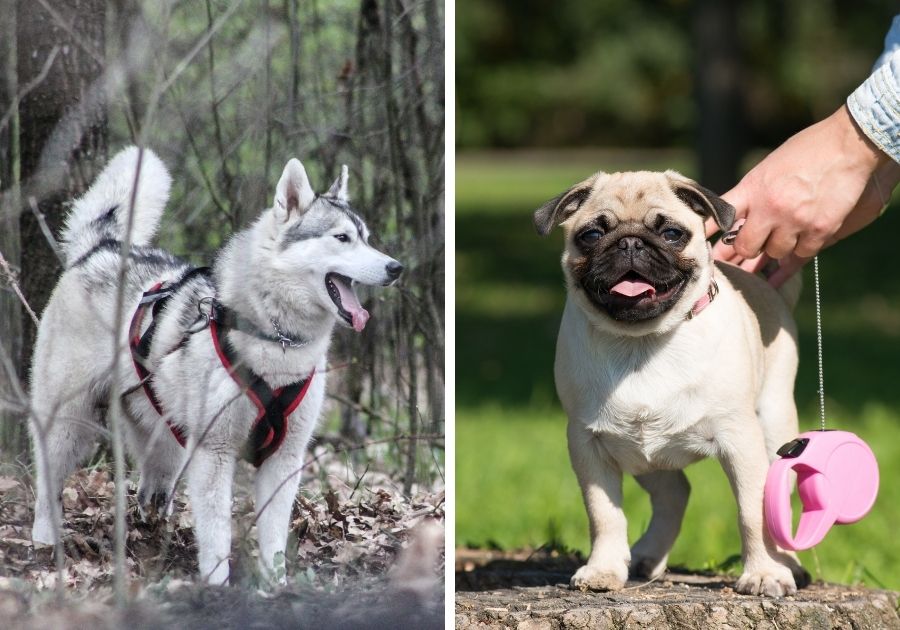
Siberian Husky
The Siberian Husky is a working breed that was used to pull sleds in the cold region of Siberia.
It originally belonged to the Chukchi tribe—nomads who relied on these dogs for transportation.
Huskies also acted as companions to the Chukchi women and children at night. Their coat helped with warmth.
This dog breed came into the United States in 1908, specifically in Alaska during the gold rush period.
By 1930, it was completely exported out of Siberia. It evolved in North America to the modern version we know today.
In 1930, the American Kennel Club recognized it.
Huskies are medium-sized breeds that weigh between 35 to 60 pounds and grow as tall as 23 inches.
They have a double coat that is thick enough to withstand cold temperatures.
The topcoat is thick, long, and straight, while the undercoat is dense and wavy.
The colors include white, black, gray & white, sable & white, and black & tan, and agouti.
This dog breed is friendly, a lover of people, and affectionate without being overly clingy.
It can also thrive in a multiple dog home. It is difficult to train, though, and needs a lot of exercise.
Pug
The smaller parent originated in China and is best recognized by its small nose.
It has existed since the Han Dynasty and is believed to be a relative of the Tibetan Mastiff.
It served as a companion for Chinese Emperors.
This breed’s first entry into the western world was in the 1500s and 1600s when it got into Europe.
It also caught the fancy of European royals like William III and Queen Victoria.
It got into the United States after the Civil War and was recognized by the American Kennel Club in 1885.
The Pug is a toy breed that weighs between 14 to 18 pounds with a height of 10 to 14 inches.
It has a short coat that is easy to maintain, except during summer when it sheds heavily.
Its coat colors include black, fawn, silver fawn, and apricot.
The Pug moves with elegance and dignity. They’re among the slowest dog breeds.
However, that doesn’t stop it from being comical and having a great sense of humor.
It knows how to goof around and make its owner laugh. Pugs also love attention and find comfort in their owner’s lap.
Don’t expect this breed to perform any job. It is a companion to the core.
Facts about the Siberian Husky Pug Mix You Should Know
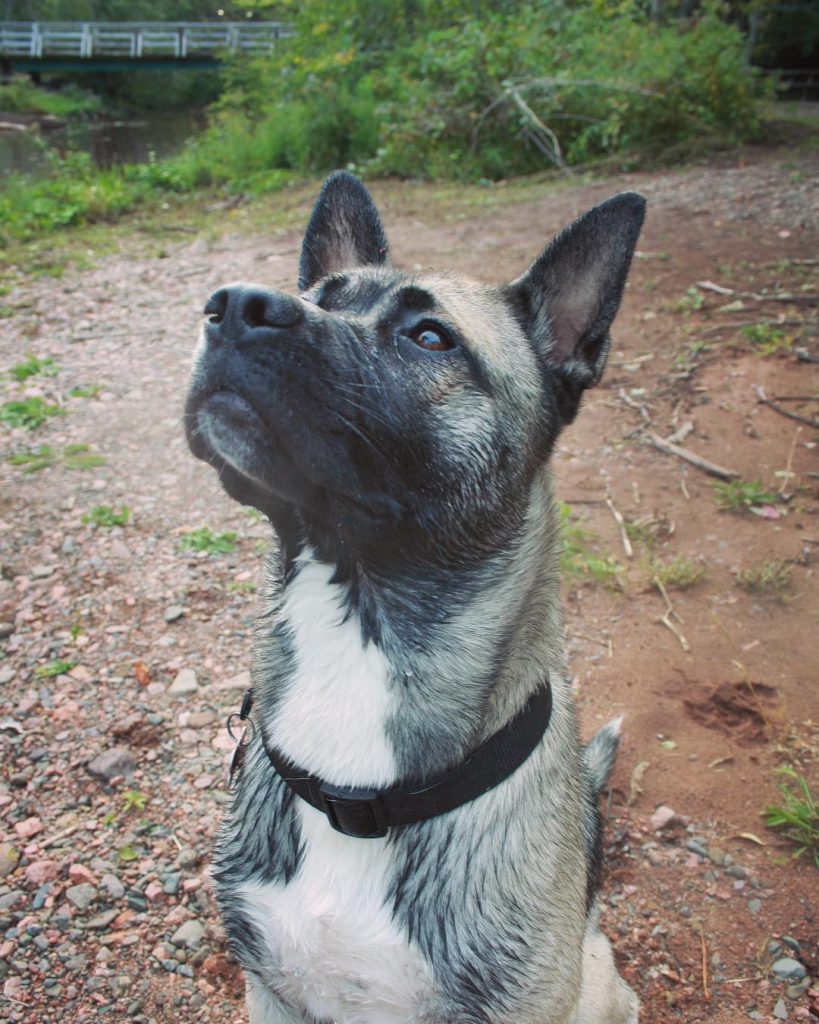
1. The Hug Dog may not be hypoallergenic
Though the Pug has a short coat, the Husky’s coat is longer and sheds.
A Husky mixed with Pug may not be suitable for those with allergies as the dead hair may be disturbing.
It is not recommended for your household if you or a member of your family is allergic to dog fur.
2. The hybrid can only be gotten from a Husky mother and Pug father
The crossbreeding that produces the Hug Dog can only be done with a Pug father and a Husky mother.
Artificial insemination is often used. It can’t be the other way round because the Pug mother is too small to carry this mix.
3. They don’t tolerate hot weather
Both Siberian Huskies and Pugs are unsuitable for the hot climate.
Huskies are known to shed excessively during summer and Pugs can have breathing difficulties under humid conditions.
Therefore, it is best to have a Husky mixed with Pug in an environment that is known for its cool weather.
4. The Pug parent is one of the oldest breeds
The Pug existed since 400 BC in China and is known to be one of the oldest surviving dog breeds.
It is way older than the Siberian Husky which is regarded as a young breed.
The Pug remains a prized dog breed in China where it began its journey as a companion, one that has not ended since then.
5. Huskies are Hollywood celebrities
Due to its resemblance with wolves, Huskies caught the attention of Hollywood producers who starred them as wolves in many movies.
Huskies are easier to tame and don’t require as many protocols as wolves. Some movies also star Huskies as sled dogs.
One such movie is Balto, an animated movie with Husky as the main character.
An example of a show which featured Huskies as wolves is Game of Thrones.
Appearance of the Hug Dog
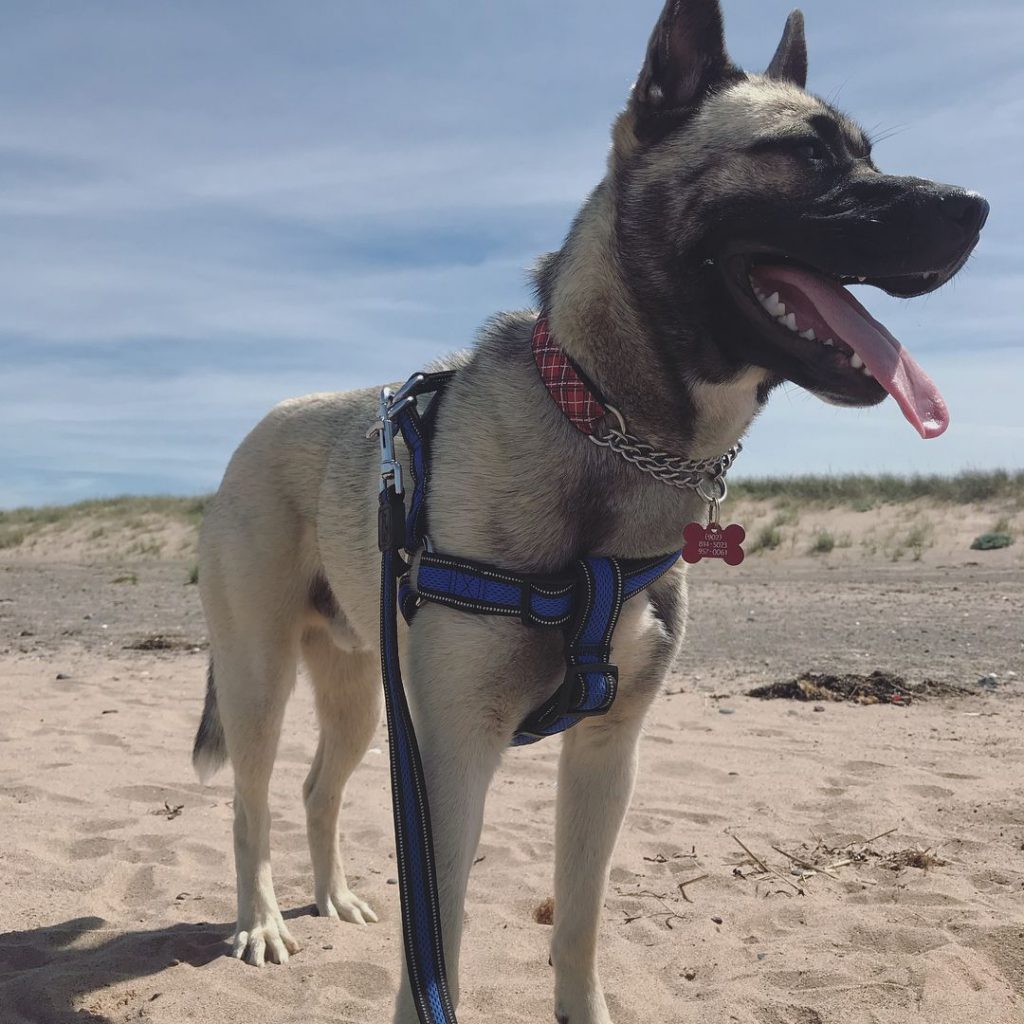
General Appearance
Many Pugskies combine the physical traits of both parents, but this isn’t a set rule.
With no standards or known expectations, the Husky Pug mix has different looks. The same applies also applies to a Husky teacup Pug.
Genes play a big role in determining which parent the hybrid will resemble more.
It may have flat or hanging ears, a short or long nose, and a curly or straight tail. It often has a stocky frame.
To determine how your mixed breed will look like, check the appearance of the parents used by the breeder. This would give you an idea of what to expect.
Size
The mix’s size is usually between the Husky and the Pug. It is smaller than the Husky but bigger than the Pug.
There is no uniform rule but its weight range falls between 30 to 60 pounds.
Its height falls between 10 to 23 inches.
Colors and Coat Type
This hybrid may either get the long coat of the Husky or the shorter one from the Pug.
Either way, it is double and gives the breed a fluffy look. The coat colors include black, grey, red, silver, white.
Temperament, Behavior & Intelligence
Regardless of which gene dominates more, there are some common grounds with both parents under temperament and behavior.
These common traits often appear in the offspring.
The Siberian Husky mixed with Pug is both friendly and playful—a breed that brings good cheer on rainy days.
It loves its owner and craves attention. It is a good cuddle dog who doesn’t appreciate being left alone.
The mix with more Husky tends to be more energetic than the Pug-dominated variant.
The latter won’t need as much exercise as the former.
Any hybrid pup who inherited the Pug’s nose should also not be overexerted to avoid breathing problems.
This is a highly intelligent and loyal designer breed who would want to please the owner.
However, the Husky gene may give this breed some stubbornness, even when the said gene is recessive.
Thus, it is not advisable for a first-time owner. It is also not suitable for an apartment unless its energy level is closer to that of the Pug.
Expect a lot of dignity and gracefulness from this breed. It can also make a good watchdog if it leans towards the Husky.
Generally, you shouldn’t have any challenges with this breed if you have experience and the right environment.
Its energy is manageable and its size is easy to handle.
Are Pug and Husky Mixes Good Family Dogs?
The Hug Dog is a good friend to both adults and children, making it a family-friendly dog with a size that prevents it from knocking down any small kid.
Good training and socialization do go a long way towards making this breed a better fit for a household, but it has the potential even before training.
The Pug parent has been a companion for millennia and the Husky was a family pet for the Chukchi.
The mix is known for its low level of aggression and protectiveness, so it can tolerate rough play with children.
Having said that, you should discourage your kids from maltreating a dog, irrespective of the latter’s level of tolerance.
Are They Good With Other Dogs & Pets?
Both the Husky and the Pug has no issues being with other dogs, so the mix shouldn’t have any too.
It can cohabit peacefully with canines, especially when well socialized.
It is even advisable to give this breed a doggy buddy if your schedule doesn’t give you enough time to give it sufficient attention.
With other pets, nothing is guaranteed. While the Pug has a low prey drive, the Husky comes with a very strong prey drive.
Introduce this mix to pets when it is a puppy and observe its reaction.
How Much Does a Husky Pug Mix Puppy Cost?
The Hug Dog cost is a bit on the high side. Its rising popularity, as well as the breeder you get it from greatly, influences price.
The average cost of Pug Husky mix puppies is between $1,200 and $2,000.
That is more than the price of the household Husky (which is at $600 to $1,300) but often less than the Pug ($1,200 to $2,500).
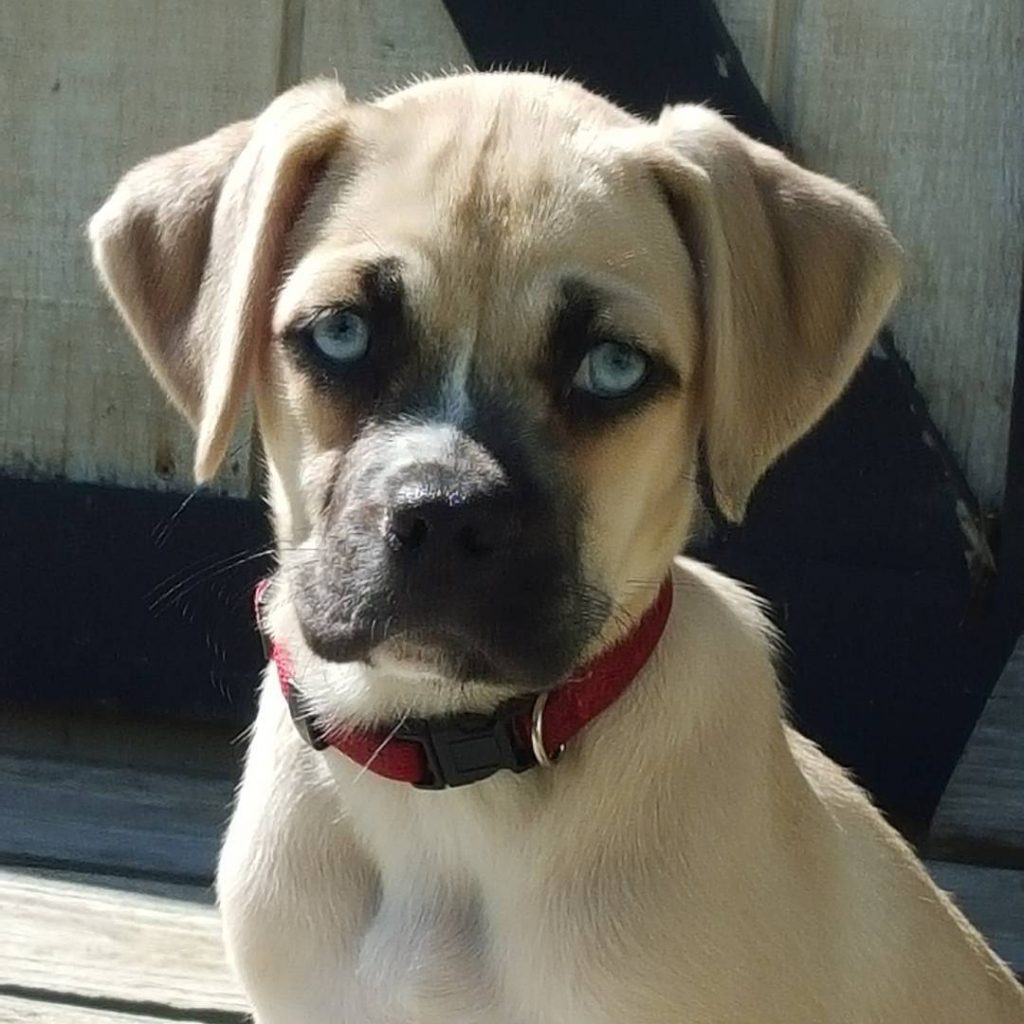
The best places to search for this breed are breeders who sell more Huskies or Pugs.
Do not be fooled into getting a pup at a cheap price from a backyard breeder as it might end up being a loss for you due to future vet expenses.
A cheaper pup might also have behavioral problems because of poor breeding.
Instead, find a reputable breeder who can prove good health and proper breeding of the pup with the right documents.
If getting from a reputable breeder is too high for you, consider adoption instead.
It has more moral value and is cheaper. However, it is not a perfect alternative.
While you are the first owner of the pup you buy, it may not be so for the one you rescue.
This means you’d have to deal with the possible mistakes of the former owner that might have led to the pup landing at a shelter.
Be sure you’re up to the task before you go for adoption. If you consider adoption, this article on How to change a dog’s name may come in handy.
Caring for a Pug and Husky Mix
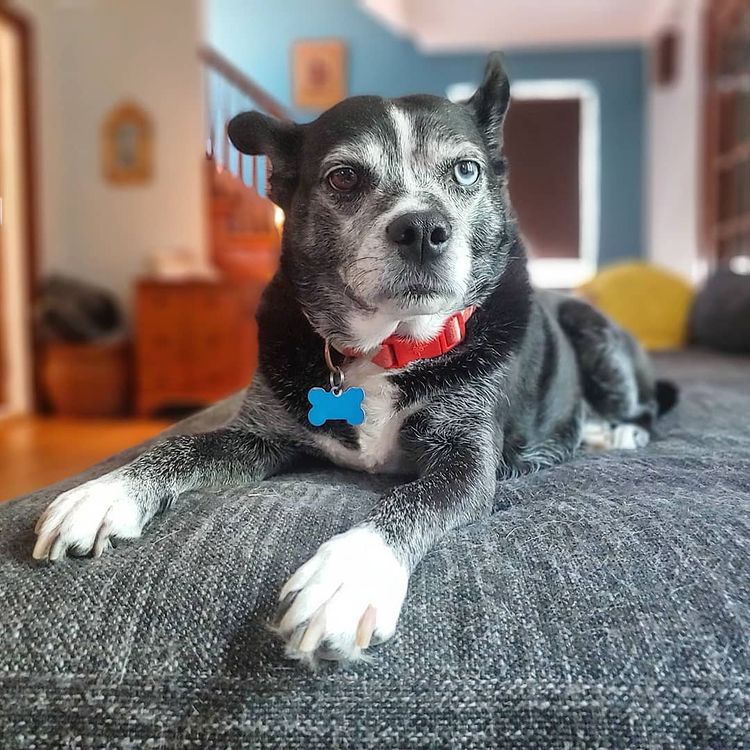
Food & Nutrition
To feed this mix, keep in mind its size. It doesn’t need a large quantity, but its diet should be highly nutritious.
It must contain enough protein, minerals, and other important nutrients at the right proportions.
This breed tends to be lazy, a trait that leaves it vulnerable to obesity. Thus, size is an important factor when establishing a feeding plan.
Age plays a good role too.
The recommended amount for an adult Husky Pug mix is 2.5 cups a day from the best dog products.
Puppies need more cups, but should not be fed the same meal as the adult.
They need a strict puppy food diet. Seniors have specific dog foods too.
Some Pugskies may develop a taste for the dog food that’s best for the larger Husky parent.
If this happens, let the portion be smaller because of calories. Treats should be kept at a minimum.
Exercise
As we noted above, the Husky and the Pug have different energy levels.
This makes exercising the offspring a tricky one.
It is up to you to determine just how much activity your Pugsky needs by observing its endurance level and activeness.
The Siberian Husky is the energetic parent with worker blood running in its veins.
If it gets bored, it becomes destructive. It needs a minimum of 2 hours of exercise a day to release its energy.
The Pug is mellow and needs at least 40 minutes of exercise, usually with more indoor games to avoid it getting tired.
Whichever trait your mix gets will determine the activity level it needs.
Once you determine what your pet is comfortable with, commit to giving it the right amount of exercise it needs.
This would curb unwanted behavior and forestall excessive weight gain.
Besides genes, age also determines how much exercise you should give your pet.
Puppies should not be allowed to run or perform strenuous activities, especially if it gets the Pug’s nose.
Some recommended activities for this breed include walking, light jog, running (if it inherited the Husky gene), fetch, Frisbee, or games like hide and seek.
Due to the Husky parent, training the Pugsky may require some patience and consistency.
However, it isn’t as challenging as a purebred Husky and is more eager to please. It is also intelligent and learns fast.
Training your puppy should start as early as possible for them to have a good foundation and not develop aggressive behavior.
Training should be slow when your pooch is still a pup. As it grows, increase the pace.
Though both parents are known to be friendly, the offspring needs socialization.
This also helps reduce aggressive behaviors. It also reduces the chances of anxiety and fear.
Introduce it to new places, people, and animals.
Obedience training shouldn’t be neglected, even if your hybrid displays more Pug traits than the Husky.
This involves teaching your pet simple commands it can recollect.
Obedience training may take time and effort, but the reward is worth it.
You should also keep its mind challenged to stop it from getting bored. Toys and puzzles are your best tools to achieve this.
Treats are other forms of positive reinforcement help motivate your canine to cooperate.
Like other dog breeds, avoid using harsh treatments and punishments on a Pugsky.
Grooming Needs
The coat of this mix also depends on a genetic lottery.
If the Husky is dominant, brushing should be done at least four times a week as this coat requires more maintenance.
During the summer season, it may shed heavily. Extra coat care is required during that period.
If it takes the Pug’s coat, it will require lesser maintenance. Brush the coat at least twice a week and it will be good to go.
The flat ears of the Pug are more susceptible to ear infection than that of the Husky.
Either way, the ears should be cleaned and wiped regularly. Its nails should be trimmed as well.
Other hygiene requirements include dental care and eye cleaning.
Health & Conditions
Designer breeds have the advantage of better health than pure breeds. The same rule applies to the Pug and Husky mix.
With a long life span of 12 to 15 years, it has the potential of creating durable memories with you.
To ensure this happens, you should play your role in preserving its health.
One way to do this is by learning the health conditions this breed is prone to. These includes:
- Brachycephalic: The Pug parent is very vulnerable to this illness because of its nose. It causes breathing problems and subsequent weakness.
- Dermatitis: This is a skin condition that irritates the affected dog’s skin. It also leads to hair loss and progresses if untreated.
- Eye diseases: Similar to both parents, this Mix can contact some eye diseases. The most common ones are cataracts and Progressive Retinal Atrophy. Both should be taken seriously.
- Hip dysplasia: This inherited condition happens when the thighbone and the hip joint are ill-fitted. It can lead to arthritis.
- Obesity: As we’ve seen, the lazy nature of this Mix makes it prone to obesity. This opens the door to various other issues and should be avoided.
How big does a Husky Pug mix get?
The Husky Pug mix is a medium breed that grows bigger than the Pug but is often smaller than the Husky.
It weighs between 30 to 60 pounds with a height that falls between 10 to 23 inches.
Can Pugs and Huskies mate?
The crossbreeding of the Husky and the Pug is commonly done by artificial insemination with a Siberian Husky mother and a Pug father.
What is a Husky Pug mix called?
A Pug mix with Husky is fondly called ‘Hug’, and it is a hugger. It can also be called a Pugsky.
How much do Hug dogs cost?
Be ready to spend a high amount because of the rising popularity of Husky Pug mix dogs. Depending on the breeder and location, the average price of a Hug pup is around $1,200 to $2,000.
Are Husky mixes good pets?
Depending on the dog breed they are crossed with, most Husky mixes make good family dogs.
However, mixes with a dominant Husky gene are difficult to train because of their blend of intelligence and independence, making them ideal for experienced owners.
Final Thoughts
If your pet parenting goal is a funny and lively breed, then you’re in luck with the Husky Pug mix.
This is especially if you want to step away from the norm of popular purebred companions.
While it isn’t for everyone, it makes a good companion for those who can provide its needs and put effort towards shaping them up.
These dogs have the royal touch and can transform your home into a modern palace.
Related Mixes You May Also Like:

